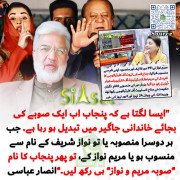miafridi
Prime Minister (20k+ posts)

The Chief of Army Staff, General Qamar Javed Bajwa, visited the Army Air Defence Centre in Karachi on Thursday and laid a floral wreath at the Shuhada monument.
He later attended the commissioning of the state-of-the-art HQ-9/P High to Medium Air Defence System of Chinese origin into the Pakistan Army Air Defence and was briefed by Commander Army Air Defence Command, Lieutenant General Hamood uz Zaman Khan, about the strategic weapon system.
The induction of the High to Medium Air Defence System (HIMADS) will significantly enhance the Comprehensive Layered Integrated Air Defence shield of Pakistan’s aerial frontiers as the system is fully integrated through a well-knit Digitised System in its inventory. Capable of intercepting multiple air targets, including aircraft, cruise missiles, and Beyond Visual Range Weapons at ranges over 100 km with Single Shot Kill Probability, the HQ-9/P is considered a strategic long-range Surface to Air Missile with remarkable flexibility and precision.
While speaking on the occasion, the Chief of Army Staff (COAS) said that the induction of high-tech systems will make Pakistan’s air defense impenetrable in the emerging threat scenario. He highlighted the criticality of air defense in the overall defense of the motherland and said the exemplary synergy between the Pakistan Air Force and the Pakistan Army Air Defence makes the country’s air defense impregnable.
He also remarked that the Pakistan–China strategic partnership and collaboration is a factor of stability in the region.
Senior officials from China also attended the event.
https://propakistani.pk/2021/10/15/pakistan-army-inducts-state-of-the-art-air-defense-system-video/

























